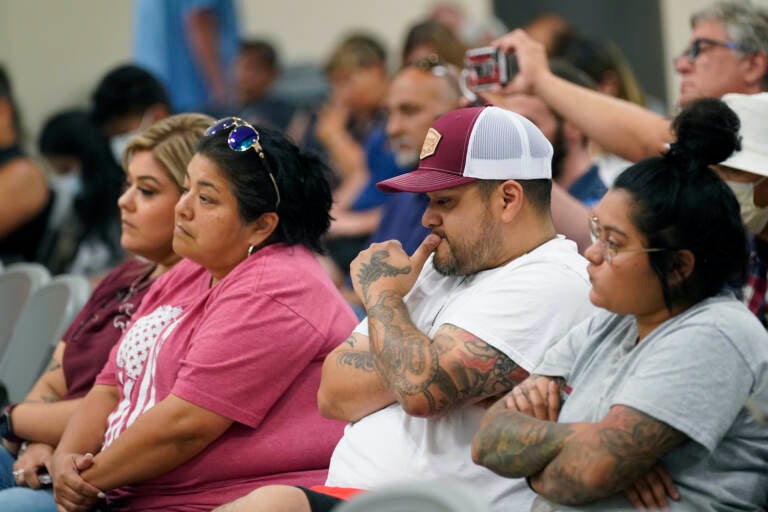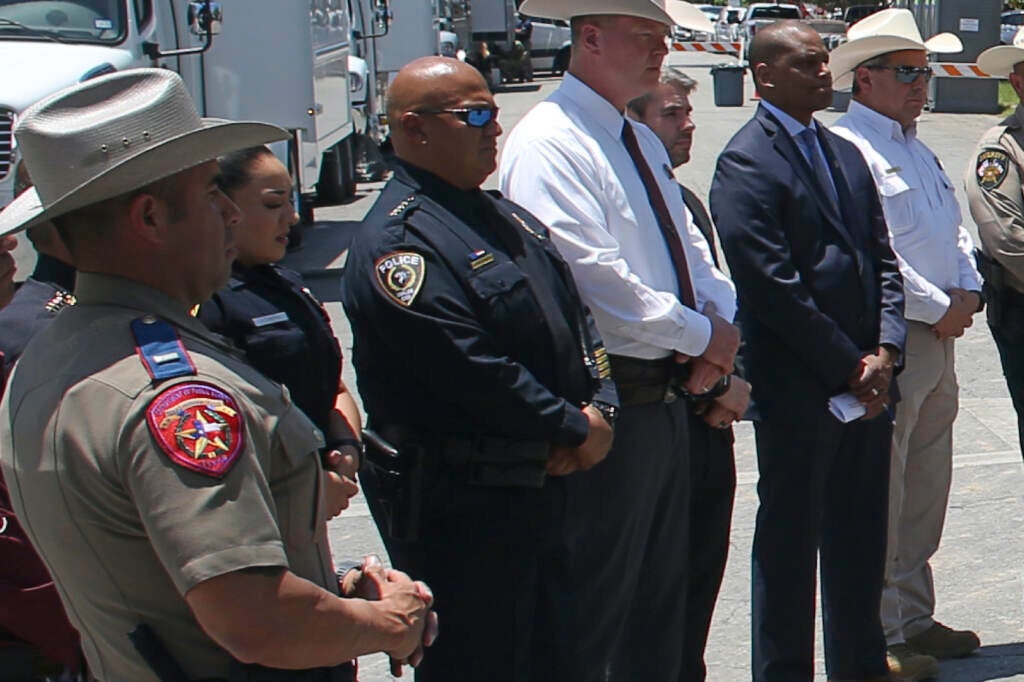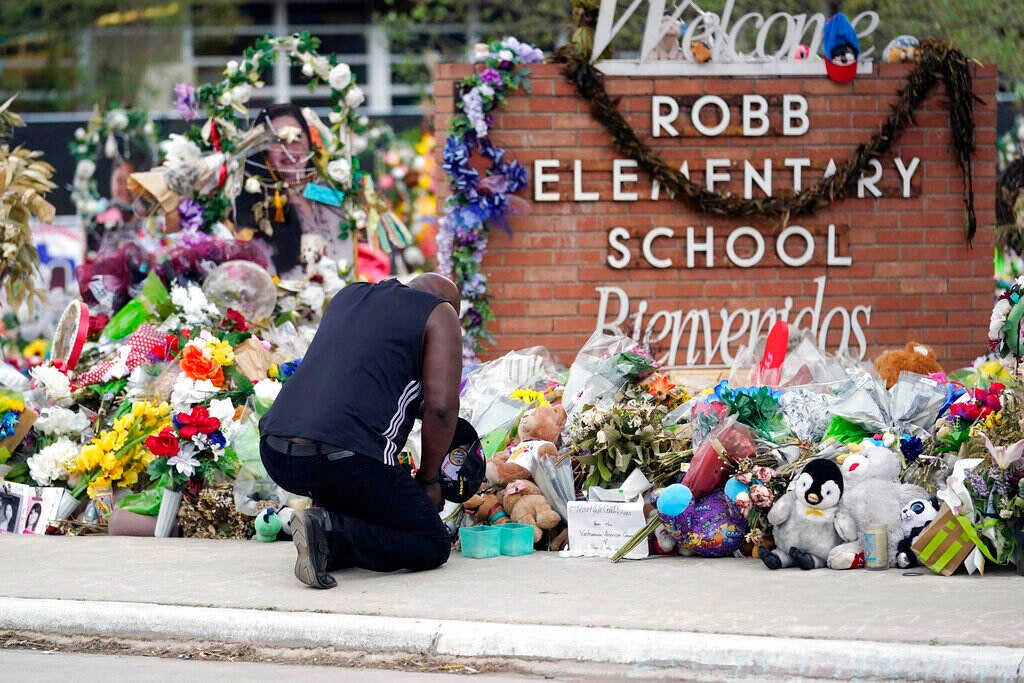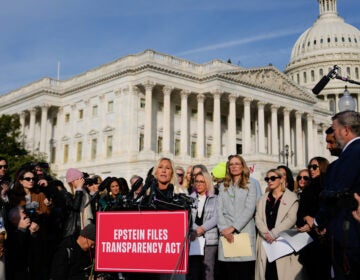4 key takeaways from the Uvalde shooting investigation report

Family of shooting victims listen to the Texas House investigative committee release its full report on the shootings at Robb Elementary School, Sunday, July 17, 2022, in Uvalde, Texas. (AP Photo/Eric Gay)
When an 18-year-old gunman targeted an elementary school in Uvalde, Texas, “systemic failures and egregiously poor decision making” on behalf of law enforcement and school officials failed to stop the shooter from killing 19 students and two teachers, a new investigative report found.
Hundreds of law enforcement officials prioritized their own safety over the lives of students and teachers that day as they waited more than an hour to confront the shooter, according to the 77-page report from a Texas House of Representatives committee.
After weeks of conflicting and inconsistent accounts of the police response, the report gives the public the most complete picture yet of the May 24 massacre at Robb Elementary School. As police fumbled without clear leadership or organization, school staff had grown less vigilant, straying from locked door policies and active shooter procedures.
“There were multiple systemic failures,” Rep. Dustin Burrows, a Republican member of the investigative committee, said in summarizing its findings at a press conference on Sunday, hours after the report’s release.
He warned that those breakdowns in safety aren’t just a problem that exist in Uvalde, adding, “some of the same systems that we found here that failed that day are across the entire state and country.”
Here are some of the key revelations the committee found in their probe.
A lack of leadership despite a robust police presence
In all, 376 law enforcement officers arrived at a scene that was chaotic and uncoordinated, the report says. The group of federal, state and local officials lacked any clear leadership, basic communication and enough urgency to take down the gunman, according to the committee.
Previous official accounts of the shooting placed primary blame on the school district’s Police Chief Pete Arredondo – who has since resigned as Uvalde school police chief — and other local police.
After arriving at the school, Arredondo fumbled around with and eventually abandoned his radio at the fence, the report stated, reasoning that one of the other sergeants was on the scene and was “fully uniformed” with a radio, he testified to the committee.
Uvalde school district’s active shooter policy called for Arredondo to be the incident commander who would’ve been responsible for leaving the building in order to organize a response and to inform other officers that he was in charge. Instead, Arredondo stayed inside the building.

After Arredondo entered the school, he went to classroom 110, which had bullet holes, but no children were inside. He then “prayed” the kids in rooms 111 and 112, where the gunman fired more than 100 rounds, had been emptied as well, he testified.
They had not been, and Arredondo proceeded to handle the incident as one of a “barricaded subject” and not an active shooter, according to the report.
“With the benefit of hindsight, we now know this was a terrible, tragic mistake,” the committee wrote.
Officers said they knew the gunman was in one of the rooms, but did not know what was happening behind the closed doors because they did not hear screams or cries, despite hearing several gunshots ringing out.
Arredondo testified that his assessment of the situation was to prevent the shooter from moving to other classrooms.
“[T]o me … once he’s … in a room, you know, to me, he’s barricaded in a room,” he said. “Our thought was, ‘If he comes out, you know, you eliminate the threat,’ correct? And just the thought of other children being in other classrooms, my thought was, ‘We can’t let him come back out. If he comes back out, we take him out, or we eliminate the threat. Let’s get these children out.”
The report revealed that most of the officers who responded to the incident were from state and federal forces, with 149 from U.S. Border Patrol and 91 from the state police department.
There were 25 city police officers and 16 from the county sheriff’s office. Arredondo’s school police force comprised five of the officers there.
The committee also faults those officers — “many of whom were better trained and better equipped than the school district police” — who it says should have filled the leadership void when they saw the chaotic scene.
“They should’ve begun asking questions and offered their support and guidance, and maybe eventually they would’ve gotten command to have a better response from that,” Rep. Burrows said.
Two officers with the Uvalde Police Department arrived at rooms 111 and 112 minutes after the attacker opened fire. The attacker shot at the officers, who were grazed by bullet fragments and retreated. They did not fire back. One left the building, the report said.
Although law enforcement made multiple missteps that disregarded active shooter training, the report says, it’s not clear that a quicker response from officers once they were on the scene could have prevented the loss of some lives.
Relaxed school security allowed the gunman to attack quickly
Although Robb Elementary had safeguards and active shooter procedures in place, school staff had developed a culture of complacency around such measures. Out of convenience, some teachers frequently left doors unlocked or propped open — a violation of school policy. Due to a shortage of keys, substitute teachers were often told to circumvent locks.
The school was also set up with an intruder alert system. But the frequency of “bailout” alerts, which flag the presence of fleeing human traffickers in the area, desensitized teachers to their urgency. No prior bailout alert had ever resulted in a violent incident at the school.
On the day of the attack, the gunman scaled a 5-foot tall exterior fence before multiple unlocked doors allowed the gunman to enter the classrooms unimpeded, the report found.
“But had school personnel locked the doors as the school’s policy required, that could have slowed his progress for a few precious minutes—long enough to receive alerts, hide children, and lock doors; and long enough to give police more opportunity to engage and stop the attacker,” it read.
Instead, the gunman likely killed most of the victims before any responder entered the building, the committee found: “Of the approximately 142 rounds the attacker fired inside the building, it is almost certain that he rapidly fired over 100 of those rounds before any officer entered.”
The gunman opened fire in his former 4th grade classroom
At 11:33 a.m., the attacker spent two-and-a-half minutes firing more than 100 rounds into rooms 111 and 112.
Room 111 was the same classroom the gunman attended fourth grade, the report revealed. Just weeks before the attack, the shooter had spoken with an acquaintance about bad memories of fourth grade.
His former fourth-grade teacher, who was in the building at the time of the shooting, told the committee he reported being bullied while in the fourth grade. She consulted with the gunman’s mother, and said he eventually began making friends.
The attacker’s family testified that he continued being picked on for his clothes and speech impediment. By 2018, when the gunman was in the ninth grade, he had accumulated more than 100 absences and had failing grades. In 2021, when the attacker was 17, Uvalde High School withdrew him.
“It is unclear whether any school resource officers ever visited the home of the attacker,” the report said.
When he returned to Robb Elementary on the day of the attack, the shooter was able to enter room 111, as the door was not properly secured, according to the report. The lock on room 111 was known to be faulty, and teachers and students would often enter to use the printer.
“Room 111 could be locked, but an extra effort was required to make sure the latch engaged,” the report’s authors said.
The teacher of that classroom, who was injured during the shooting, testified that he would often be admonished by school police about the door, and notified school administration, who said a request had been submitted. The teacher never submitted a work order himself, “as was the apparent practice among Robb Elementary teachers,” the report said.
The head custodian at the school testified that he never knew of any problems with the door, or would have submitted a work order. The principal said administration had been alerted about the door in March.
On the day of the shooting, the teacher for room 111 said he could not remember receiving an alert about an active shooter or if he used extra effort to secure the door.

The attacker shot his grandmother after an altercation about his phone plan
Three minutes after the gunman fired into rooms 111 and 112, Uvalde Police Department dispatch received a call that a woman had been shot in the head, according to the report. It was the gunman’s grandmother.
Before leaving for Robb Elementary School, the gunman and his grandmother had an altercation about his phone that resulted in her making a call to AT&T to remove him from the plan, according to the report.
During the incident, he contacted a female acquaintance in Germany for an hour, and upon hanging up, texted her of his plans to harm his grandmother, the report showed.
“Ima do something to her rn,” he wrote, along with “I just shot my grandma in her head” and “Ima go shoot up a elementary school rn.”
The acquaintance initially responded with “cool,” which she deleted before saying, “I just saw the news.”
He shot his grandmother in the face before stealing her truck, despite not having a driver’s license, and drove to Robb Elementary.
She survived the attack and was released from the hospital June 29, according to CNN.
The attacker began buying firearms accessories in February, and when he turned 18 in May, spent almost $5,000 on two assault rifles and hollow point bullets, which expand upon impact.
The attacker’s uncle drove him to the gun store twice to pick up the rifles, and after his grandmother told him he couldn’t keep guns in her home, his uncle allowed him to stow one of the weapons at his house.
The gunman told an acquaintance he hid the second rifle outside of his grandmother’s home, and brought it inside the night before the massacre.
9(MDAzMzI1ODY3MDEyMzkzOTE3NjIxNDg3MQ001))




